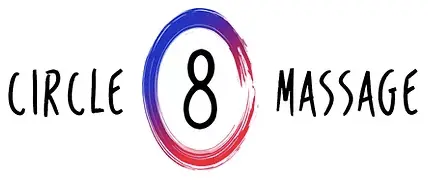It as been estimated that there are more than 1 million ankle sprains and strains every year in the UK. These can range from mild cases that take little more than rest to recover from, to more serious damage that requires many months of physio and could lead to chronic pain or re-injury.
Whether your ankle pain is the result of an accident, or it has developed over time, massage therapy could be the ideal way to improve your range of motion and eliminate pain in the long term.
Types of Ankle Injuries
Your ankle is where the tibia and the fibula of the lower leg meet the talus bone of the foot. This ankle joint is stabilised by ligaments – strong elastic bands that keep the bones in place. Tendons then attach to the bones to allow the joint to move freely.
Generally, an ankle injury is diagnosed depending on which of the above tissues has been injured:
- Bone injury: a fracture or complete break of one of the bones of the ankle (this will almost always involve damage to the ligaments or tendons as well)
- Ligament injury: a sprain that involves tears of the ligaments or even a complete rupture. This is the most common type of ankle injury.
- Tendon injury: muscles and tendons that have been pulled beyond their usual range of motion. In the ankle this could be tendinitis (a sudden tear) or tendinosis (a gradual build-up of tendon damage)
Causes of ankle pain
Activity
Most ankle injuries happen during sporting activities such as running, but it is possible to sustain a serious injury simply from walking on uneven surfaces or from wearing inappropriate shoes. Rolling your ankle or landing awkwardly can cause immediate pain, making it more obvious how the injury was caused. However, for many, ankle injuries can be caused by factors we are unaware of until the pain begins and gets worse.
Misalignment and muscle weakness
A properly aligned and strong lower body is essential for ankle health. The musculoskeletal system is designed to be interconnected and each set of joints works in harmony with each other. Your ankles bear the load of your entire body with each step and any favouring or misalignment of the ankle can lead to knee and hip problems. This also works in reverse with hip issues, knee problems or weakened muscles in the glutes causing problems elsewhere in the body, such as the ankles. This highlights how important it is to check the entire lower body when a someone presents with ankle pain.
How soon can I get massage for an ankle injury?
This depends on the type of injury you have, although in almost all cases it is fine to have massage on the ankle from around 1-2 weeks following the injury. In the case of a minor sprain or strain or an ongoing chronic injury, you can have massage within 24 hours. This does not apply if you have had a full bone break or fracture or have undergone surgery. In the case of these more serious injuries, it is essential you speak to your doctor.
Your massage therapist will take care to remain superficial in their massage techniques while your ankle is still healing and to respond to any pain or discomfort you feel during the session. Good communication on this is essential. In most cases though, massage will reduce inflammation and swelling and promote faster healing.
How massage therapy can help ankle pain
Your first step after experiencing ankle pain should be a visit to A&E or to your doctor. It is important to rule out a fracture, which may require a cast and complete rest, from a sprain that could be self-treated with heat and ice, followed by strength-building exercises.
Once you have the approval of your doctor you may wish to have massage therapy to continue the healing of your ankle. Ligament and tendon damage can take up to 2 years to fully heal and during this time you may experience pain and your walking gait may be affected – leading to hip and knee problems. It is important to have your ankle back in good shape as quickly as possible.
A massage therapist has a few tricks up their sleeve to improve the healing of your ankle and to prevent further damage or re-injury.
Remedial massage
This is designed to help with the effects of your injury including muscle soreness both around your ankle and lower leg, your hips and your lower back. This type of massage focuses on the soft tissues, adding heat and promoting mobility.
Cross friction massage
This type of massage is designed to prevent the formation of adhesion scar tissue that could reduce the range of motion around the injury. This massage technique is deep and can sometimes be uncomfortable (but not painful). The massage is given across the tissue fibres and will increase blood flow at the same time as preventing the fibres from sticking together causing internal scars.
Deep tissue massage
This can be used to move the deeper layers of muscle and tissues to release any long term contracted or tense areas. This will also aid in lymphatic drainage to prevent swelling and the collection of fluid in the ankle and lower legs due to inflammation.
All of these techniques will prevent the formation of scar tissue, increase the range of motion of the ankle, reduce the level of general discomfort elsewhere in the body and encourage lymphatic draining around the ankle to reduce swelling.
Self-help for an ankle injury
While there is much we can do in the massage therapy room to treat your ankle pain, there are also things you can do at home to speed up the process and prevent further damage as time goes on.
Exercise
Once you have been cleared by your doctor (especially if you suffered a fracture or tendon injury) you should try to move your ankle as much as you can to strengthen the muscles that surround it. We can give you hints and tips about the best exercises to do. These should focus both on the ankle and on other associated muscles groups. In particular, the glutes and core muscles to encourage proper body alignment.
Shoe choice
Choose the right shoes for the activities you are doing and ensure your ankle is well supported. Consider visiting an expert to have orthotics fitted if yours is a chronic mis-alignment problem.
Take care
Remember that an injured ankle could become weakened and more prone to rolling and twisting during activities you previously found easy. While exercises and massage can really help with this, you should still take care when walking on uneven surfaces or during sports. Always warm up before doing anything too strenuous.







